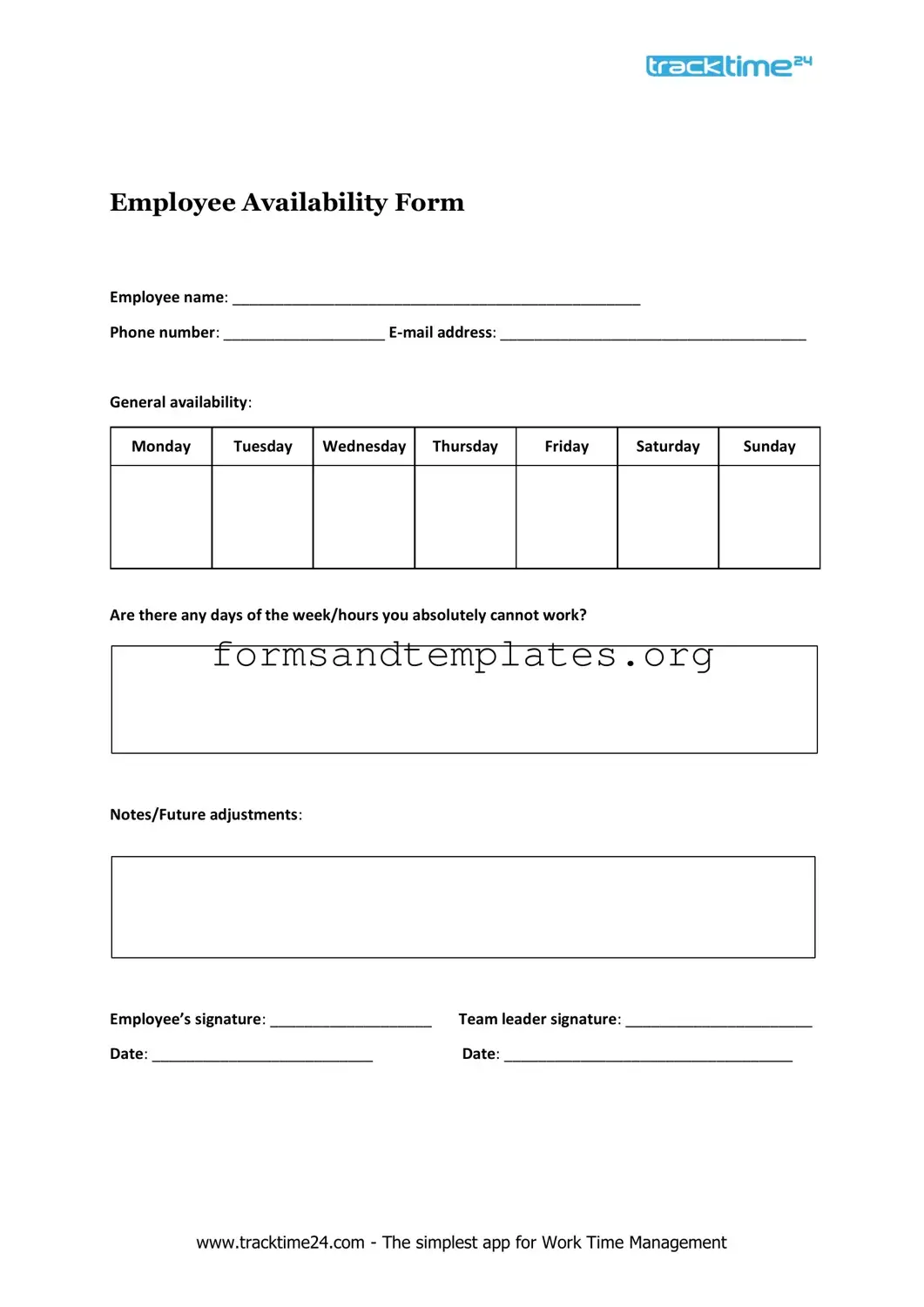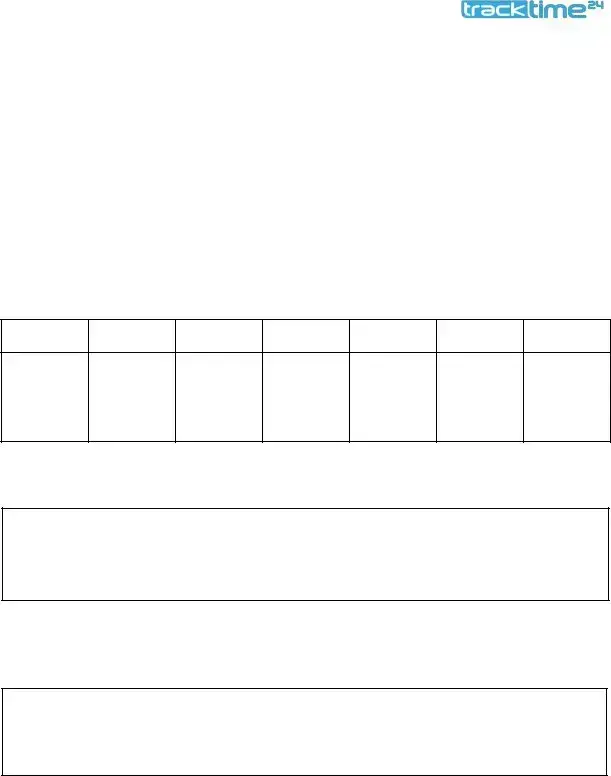The Employee Availability form is a document used by employers to gather information about when employees are available to work. This form helps in scheduling shifts and ensuring that the workforce is adequately staffed during peak hours. It typically includes sections for employees to indicate their preferred working days and hours.
Accurate completion of the Employee Availability form is crucial for several reasons:
-
It ensures that your preferred working hours are taken into account.
-
It helps management create a balanced schedule that meets both business needs and employee preferences.
-
It reduces the likelihood of scheduling conflicts, which can lead to frustration for both employees and management.
How often should I update my availability?
Employees should update their availability whenever there are significant changes in their personal or professional lives. For instance, if you start a new class, take on a second job, or experience changes in family commitments, it is advisable to submit a revised form. Regular updates help ensure that the schedule reflects your current situation.
What if I have a fluctuating schedule?
If your availability changes frequently, you may want to communicate this to your supervisor directly. While the form captures your general availability, discussing your situation can help management understand your needs better. Consider specifying any patterns or trends in your availability when you fill out the form.
Yes, the Employee Availability form often includes a section for requesting specific days off. It is important to clearly indicate any dates you will be unavailable. This allows management to plan accordingly and avoid scheduling you on those days. However, keep in mind that requests are subject to approval based on staffing needs.
What should I do if I miss the deadline for submitting my availability?
If you miss the deadline, it is best to reach out to your supervisor as soon as possible. They may still be able to accommodate your availability, but it depends on the current scheduling needs. Open communication is key, so don’t hesitate to express your availability even if the formal submission period has passed.
Is there a way to indicate my preferred shifts?
Many Employee Availability forms provide a section where you can indicate your preferred shifts, such as morning, afternoon, or evening. Be sure to fill this out clearly. If the form does not have a specific area for preferences, you can always communicate your desired shifts directly to your supervisor.
If your availability changes after submission, it is important to inform your supervisor immediately. You may need to fill out a new form or simply provide an update via email or in person. Keeping management informed allows them to make necessary adjustments to the schedule and helps ensure that your needs are met.

